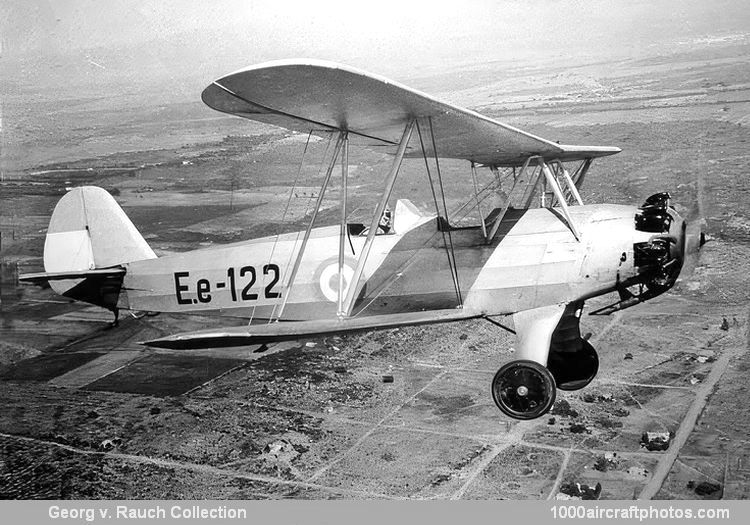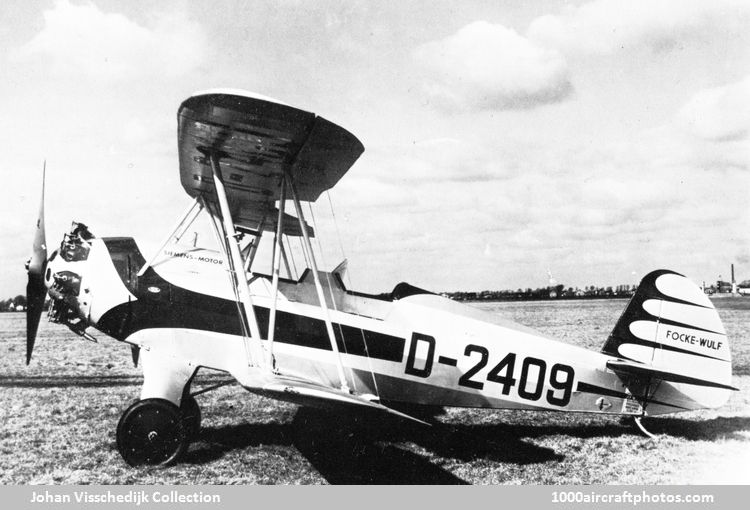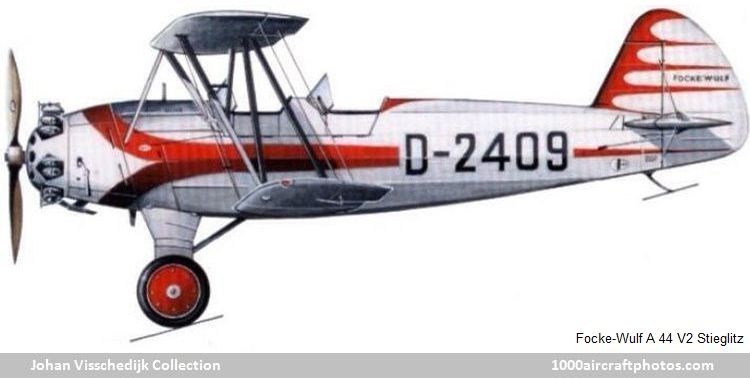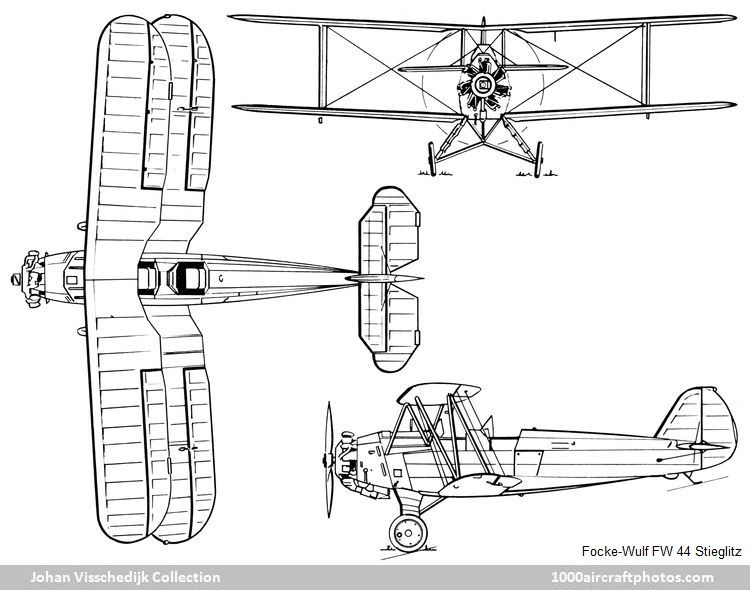GEORG v. RAUCH COLLECTION
No. 14276. Focke-Wulf Fw 44 J Stieglitz (E.e-122 c/n 119) Argentine Air Force
06/30/2024. Remarks by
Johan Visschedijk: "Until the production of the Fw 44 during the early 1930s, the name of Focke-Wulf was virtually unknown outside Germany, and then it was frequently confused with the Dutch Fokker company. Apart from being built in larger numbers than any other Focke type except for the Fw 190, the Fw 44 was sold to many foreign owners, and also built under license.
Design work on the A 44 (as the type was originally designated) was completed early in 1932, it being a single-bay biplane trainer and sporting aircraft with two tandem seats. The wings, which had slight dihedral and sweepback, were constructed of a mixture of pine and plywood with part plywood and part fabric covering. The fuselage was constructed of welded steel tube with fabric covering apart from a small section around the nose which was metal. N-struts supported the upper wing above the fuselage, and were used in between the wings. Each mainwheel was mounted on a large streamlined leg which was braced to the lower fuselage.
During the late summer of 1932, the prototype, the Focke-Wulf A 44 V2 Stieglitz (registered D-2409 c/n 154) made its first flight with Gerd Achgelis at the controls. The aircraft was powered by a 140 hp Siemens Sh 14a seven-cylinder air-cooled radial driving a two-bladed wooden airscrew. Two fuel tanks with a total capacity of 35.66 gal (135 l) were mounted in the fuselage forward of a fireproof bulkhead. Aft of this bulkhead were the two tandem seats, the rear of which could be folded for access to a small parcel space. Full dual controls were provided, the instructor sitting in the rear seat.
The prototype A 44, which was named Stieglitz (Goldfinch) in Focke-Wulf's series of bird names, displayed several unfortunate flying characteristics. After Kurt Tank joined the company he took over flight testing of the aircraft, and following a considerable number of minor modifications, the flight characteristics were immensely improved.
After the new
RLM aircraft designation system was introduced early in 1933, the Focke-Wulf A 44 V2 became the Fw 44. The second prototype, the Fw 44 B differed in being powered by a 135 hp Argus As 8 four-cylinder in-line engine in a considerably lengthened cowling. During 1933 the Fw 44 competed with the somewhat similar Arado Ar 69 for a contract to provide the still secret Luftwaffe with a primary trainer. The excellent performance now displayed by the Stieglitz made the result of the competition a foregone conclusion.
Three further prototypes were constructed with the Siemens Sh 14a radial, designated Fw 44 C, D and D. The latter was fitted with full operational equipment and was delivered to the Luftwaffe as the Fw 44F production series. A second Argus As 8 powered prototype was also built under the designation Fw 44 E, a small number of production aircraft being delivered as the Fw 44 E.
The Stieglitz formed the initial equipment of many early Luftwaffe units, including Fliegergruppen (Flying Groups) and Fliegerschulen (Flying Schools), as well as several
DVSs and various sections of the
DLV. Apart from the military and paramilitary organizations, the Fw 44 was also delivered to many private owners. Included amongst these were the German aerobatic experts Ernst Udet, Gerd Achgelis and Emil Kropf. During the middle 1930s Achgelis made a tour through the Americas with the Fw 44 which did much to impress potential foreign buyers. During the period that preceded World War II the Stieglitz was delivered to Bolivia, Chile, China, Czechoslovakia, Finland, Rumania, Switzerland, Turkey, while five countries produced the Fw 44 under license: Austria, Argentina, Bulgaria, Brazil and Sweden.
Just before the war, an improved version of the Stieglitz was built under the designation Fw 44 J. Powered by a more powerful Siemens Sh 14A engine which developed 150 hp for take off, the variant saw widespread service with the Luftwaffe's training schools. Several of these aircraft were fitted with skis for winter operations.
After the war, many Fw 44s remained in service with various air arms and private owners. The last aircraft did not disappear from military service in Sweden and Switzerland until the latter part of the 1950s.
The pictured aircraft was built in Argentina by Fábrica Militar de Aviones (FMA, Military Aircraft Factory). After the Argentine Army obtained ten examples from Focke Wulf in 1937, FMA obtained the same year a license whereafter 190 FW 44 Js were built from December 6, 1937 up to 1942. The pictured aircraft is preserved at the Museo Nacional de Aeronáutica (National Museum of Aeronautics, "Brig. Edmundo Civati Bernasconi" at Jorge Newberry Airport, Buenos Aires."



